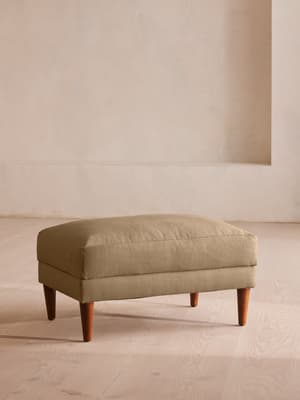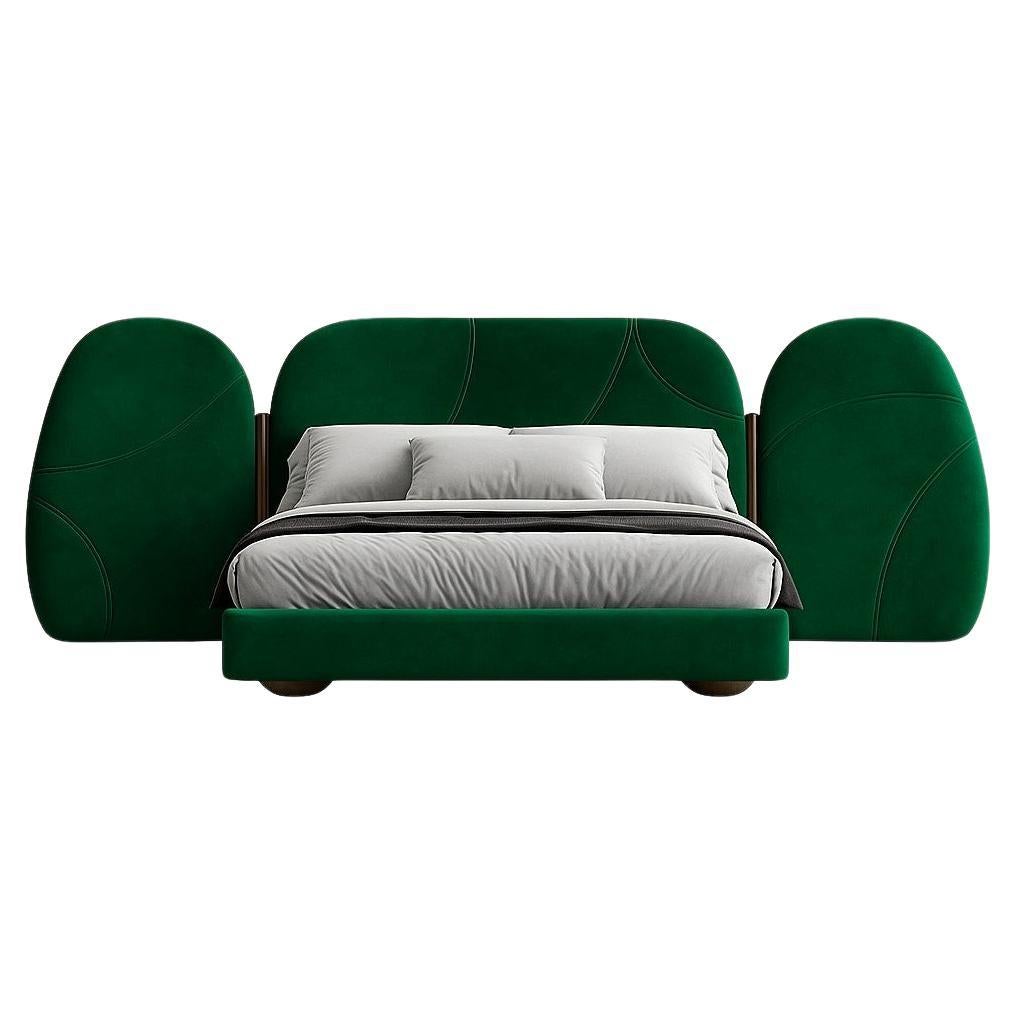Have you ever wondered why a simple piece of furniture is called an “Ottoman”? It’s a word you see everywhere, from living rooms to design magazines, but its origin might surprise you.
Understanding where this name comes from can change the way you see your own space and the story behind your favorite footrest. Keep reading, and you’ll discover a fascinating history that connects your home to a faraway culture — and you’ll never look at an Ottoman the same way again.

Credit: votu.blog
Origins Of The Ottoman Name
The name “Ottoman” carries a rich history tied to a powerful empire and unique cultural roots. Understanding the origin of this name helps explain why it is used for the popular furniture piece. This section explores where the term “Ottoman” comes from and its historical significance.
Historical Background
The Ottoman name comes from the Ottoman Empire, a vast and influential state. It lasted from the late 13th century to the early 20th century. The empire began in modern-day Turkey and grew to cover parts of Europe, Asia, and Africa.
The empire was named after Osman I, its founder and first ruler. His name in Arabic is “ʿUthmān,” which became “Ottoman” in English. The empire’s culture and style spread widely and influenced many areas, including furniture design.
Etymology Of ‘ottoman’
The word “Ottoman” is derived from Osman’s name. It entered European languages through French and Italian during the empire’s peak. The term originally described anything related to the Ottoman Empire.
In furniture, an “ottoman” refers to a low, upholstered seat or footstool. This style likely came from the empire’s traditional seating arrangements. The name stuck because the design reminded Europeans of Ottoman culture.
The Ottoman Empire Connection
The Ottoman Empire got its name from Osman I, the founder of the dynasty. His name, “Osman,” was adapted into “Ottoman” by Europeans. This name represents the empire’s roots and its leader’s legacy.
Rise Of The Ottoman Empire
The Ottoman Empire began in the late 13th century in modern-day Turkey. It grew rapidly, becoming one of the largest empires in history. The empire lasted over 600 years, shaping politics, culture, and trade across Europe, Asia, and Africa. Its power and influence spread far beyond its borders.
The empire’s wealth and resources allowed it to create unique art and design. This included furniture styles that combined comfort with elegance. The name “Ottoman” for the footstool or padded seat comes directly from this empire’s legacy.
Cultural Influence On Furniture
Ottoman furniture reflects the empire’s love for luxury and detail. Craftsmen used rich fabrics, intricate patterns, and soft cushions. These pieces were designed for comfort and style, often used in palaces and homes.
The style became popular in Europe during the 18th and 19th centuries. Travelers brought back these designs, inspiring furniture makers worldwide. The “ottoman” as a piece of furniture symbolizes this cultural exchange and the empire’s lasting impact.
Evolution Of The Ottoman Furniture
The term “ottoman” comes from the Ottoman Empire, where this furniture style first appeared. It was designed as a low seat or footrest, blending comfort with elegant craftsmanship. This piece quickly became popular worldwide due to its practical and stylish design.
The evolution of the ottoman furniture reflects a rich history. Originating as a symbol of luxury, it has transformed over the centuries. Today, it serves both functional and aesthetic purposes in homes. This journey from classic to modern styles is fascinating.Early Designs And Uses
The ottoman began its journey in the Ottoman Empire. It functioned as a central piece for seating. These early designs featured lush fabrics and detailed patterns. Often used in palaces, they symbolized wealth and comfort. The ottoman provided a versatile seating option. It accommodated many people at once. Its design was both simple and elegant.Transition To Modern Styles
Modern ottomans have evolved significantly. They now come in various shapes and sizes. From round to square, the designs are diverse. Some ottomans double as storage units. Others feature sleek, minimalistic designs. The materials used have also changed. Leather, linen, and synthetic fabrics are popular. Ottomans are now a staple in living rooms worldwide. They offer style and functionality. A perfect blend of past and present.
Credit: www.sohohome.com
Ottoman In Different Cultures
The ottoman has traveled across many cultures, each giving it a unique touch. This piece of furniture is not just a footstool but a symbol of comfort and style worldwide. Its name reflects a rich history linked to the Ottoman Empire. Different cultures have embraced and adapted the ottoman in distinct ways.
Adoption Across Regions
The ottoman first appeared in the Ottoman Empire, now Turkey. It spread quickly to Europe during the 18th century. In Europe, it became popular in salons and living rooms. North America adopted the ottoman in the 19th century, using it mainly as seating. In the Middle East, the ottoman often serves as a low seat or table. Many Asian countries also use ottomans but with local materials and styles.
Variations In Design And Function
Designs vary widely depending on culture and use. Some ottomans are simple cubes with storage inside. Others feature intricate carvings and luxurious fabrics. In Western homes, ottomans often match sofas and chairs. In Morocco, ottomans are colorful and made of leather. In Japan, small ottomans serve as tea tables or footrests. Function also changes: some ottomans open to hold blankets or toys. Others are firm and used for extra seating or decoration.
Symbolism And Significance
The ottoman carries more than just practical use; it holds a rich symbolism tied to history and culture. Its name and form reveal a story of status and elegance that has traveled through time and across continents. Understanding this symbolism helps you appreciate why the ottoman remains a popular piece in homes worldwide.
Status And Comfort
The ottoman was originally named after the Ottoman Empire, where such furniture symbolized luxury and power. Owning an ottoman once meant you belonged to the elite, as these pieces were often found in royal courts.
Comfort was a key part of its appeal. The soft padding invited relaxation, signaling a lifestyle that valued rest and leisure. Have you ever noticed how adding an ottoman to your living space instantly makes it feel cozier and more inviting?
Role In Interior Decor
Beyond comfort, the ottoman plays a vital role in shaping a room’s design. Its versatile form allows it to function as a footrest, extra seating, or even a coffee table.
In your home, an ottoman can add color, texture, and a touch of sophistication. Think about how a well-chosen ottoman can tie together different elements in your living room, making the space feel balanced and intentional.

Credit: www.1stdibs.com
Ottoman Today
The ottoman remains a popular piece of furniture in homes today. It serves many purposes beyond its original use as a simple footstool. This versatile item fits well in living rooms, bedrooms, and even offices. Its design and function have evolved to meet modern needs and styles.
Contemporary Usage
Today, ottomans act as extra seating or a coffee table. Many have storage space inside, helping keep rooms tidy. People use them to add comfort and style. Soft fabrics and durable materials make them both cozy and long-lasting. Their compact size suits small apartments and large houses alike.
Trends And Innovations
Modern ottomans come in various shapes and colors. Designers experiment with bold patterns and textures. Some feature wheels for easy movement around the room. Eco-friendly materials grow in popularity among buyers. Multifunctional ottomans combine seating, storage, and tables in one piece.
Frequently Asked Questions
Why Is The Furniture Called An Ottoman?
The furniture is called an Ottoman because it originated from the Ottoman Empire. It was a popular seating style in Ottoman homes. The name reflects its historical and cultural roots, linking the design to the empire’s influence on furniture and décor.
What Is The History Behind The Ottoman Name?
The Ottoman name comes from the 18th century when the empire influenced European furniture styles. It referred to a low upholstered seat without a back or arms. This piece became popular due to its comfort and versatile design in homes.
How Did Ottomans Influence Modern Furniture?
Ottomans introduced plush, low seating that combined function and style. Their designs inspired European furniture makers to create similar pieces. Modern ottomans retain this blend of comfort and practicality, showing the lasting impact of Ottoman design.
Is The Ottoman Only A Footstool?
No, the Ottoman is not just a footstool. It can serve as extra seating, a coffee table, or storage. Its multifunctional use makes it a popular furniture piece in many homes today.
Conclusion
The name “Ottoman” connects furniture to history and culture. This simple piece holds stories from the Ottoman Empire. It shows how design crosses borders and time. Today, ottomans add comfort and style to many homes. Knowing the name’s origin makes the piece more special.
It reminds us that everyday items can have rich pasts. So, the next time you see an ottoman, think about its journey. Small things often carry big stories.





